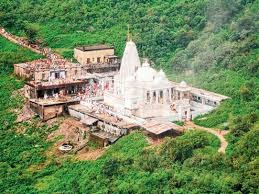Parasnath Jain Temple Jharkhand
Parasnath is a mountain peak in the Parasnath hill range of Jharkhand. It is located towards the eastern end of the Chhotanagpur Plateau in Giridih district (Hazaribagh district in British India) of the Indian state of Jharkhand. The hill is named after the 23rd Jain Tirthankara Parshvanath. In this connection, there is Jain pilgrimage Shikharji on the top of the hill. In religious context the hill is also known as Marang Buru (meaning: ‘great mountain’, supreme deity) by the Santhals and other tribal people.
Highest peak of Jharkhand
Parasnath is the highest mountain peak of Jharkhand state with a height of 1365 meters. It is theoretically visible (from strict line of sight on a perfectly clear day) at a distance of more than 450 km along Mount Everest. It is easily accessible from Parasnath Railway Station.
Marang Buru
Santhals and other tribals have lived in the Parasnath hill areas for centuries. This mountain is associated with the faith of Santhal tribals which they worship for centuries in the name of Marang Buru.
Marang Buru literally means “great mountain” or “big mountain”.Marang Buru is revered by the tribals as the supreme deity. There is also a Santhal tribal religious place, Dharam Garh. Munda, Santhal, Bhumij, Ho and other tribal communities of Jharkhand, Bihar, West Bengal, Orissa, Assam and Madhya Pradesh consider Marang Buru as the supreme deity.
Sammed Shikharji
Main article: Shikharji
It is one of the most sacred and revered places for the Jain community. They call it Sammed Peak. Of the 24 Tirthankaras of the Jains, 20 attained nirvana on the Parasnath hills. On Parasnath mountain, there is Shikharji Jain temple, an important Jain pilgrimage site. There is a temple (gumti or tonk) on the hill for each Tirthankara.
It is believed that the Jain temple was built by Magadha king Bimbisara. Cunningham noted stone structures in the village, which he described as the remains of a Buddhist stupa dating from the 2nd century BC. Although the site was identified by Cunningham, no excavation has taken place there to date.














